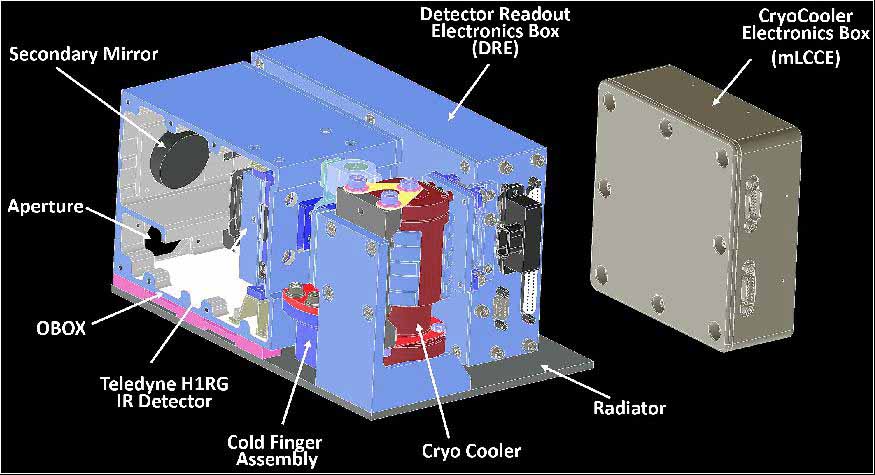
 |
BIRCHES: Broadband InfraRed Compact High Resolution Exploration SpectrometerPrincipal Investigator: Dennis Reuter, NASA/GSFC Planetary Systems LaboratoryThe Broadband InfraRed Compact High Resolution Exploration Spectrometer (BIRCHES) is a central instrument of Lunar IceCube, a mission led by Ben Malphrus of Morehead State University that has been recently selected for a 2018 launch by NASA’s NextSTEP Program. BIRCHES will conduct an infrared spectroscopic investigation to improve our understanding of the distribution of volatiles, including water, on the Moon’s surface. Press release |
 |
CubeSat TelescopePrincipal Investigator: Ted Kostiuk, NASA/GSFC Planetary Systems LaboratoryThe CubeSat Telescope project aims to demonstrate the design of a compact telescope with fast, reflective optics and an interface, including fiber optic coupling, appropriate for use with UV-Vis-NIR mini-spectrometers. Such a telescope subsystem would have a “standard” instrument interface and be compatible with low-cost, mass-produced spectrometers. This approach can lead to rapid CubeSat instrument development, paving the way for large scale deployment to study planets, Earth and other solar system objects over a broad spectral range (UV-NIR) and enable atmospheric and surface studies on multiple targets at reduced cost and improved efficiency and science return. Press release |
 |
UV-Vis-NIR SpectrometerPrincipal Investigator: Shahid Aslam, NASA/GSFC Planetary Systems LaboratoryThe goal of the UV-Vis-NIR Spectrometer project is to demonstrate the efficacy of a miniature commercial-off-the-shelf (COTS) UV-Vis-NIR spectrometer that can address broad planetary science goals. COTS low-cost, mass-produced devices can be integrated into a CubeSat infrastructure for rapid development and potential large scale deployment, such as in swarms. We are working on a number of critical issues that include characterizing broadband spectral response in the context of planetary remote sensing, and data communications with the science and CubeSat bus processor. |